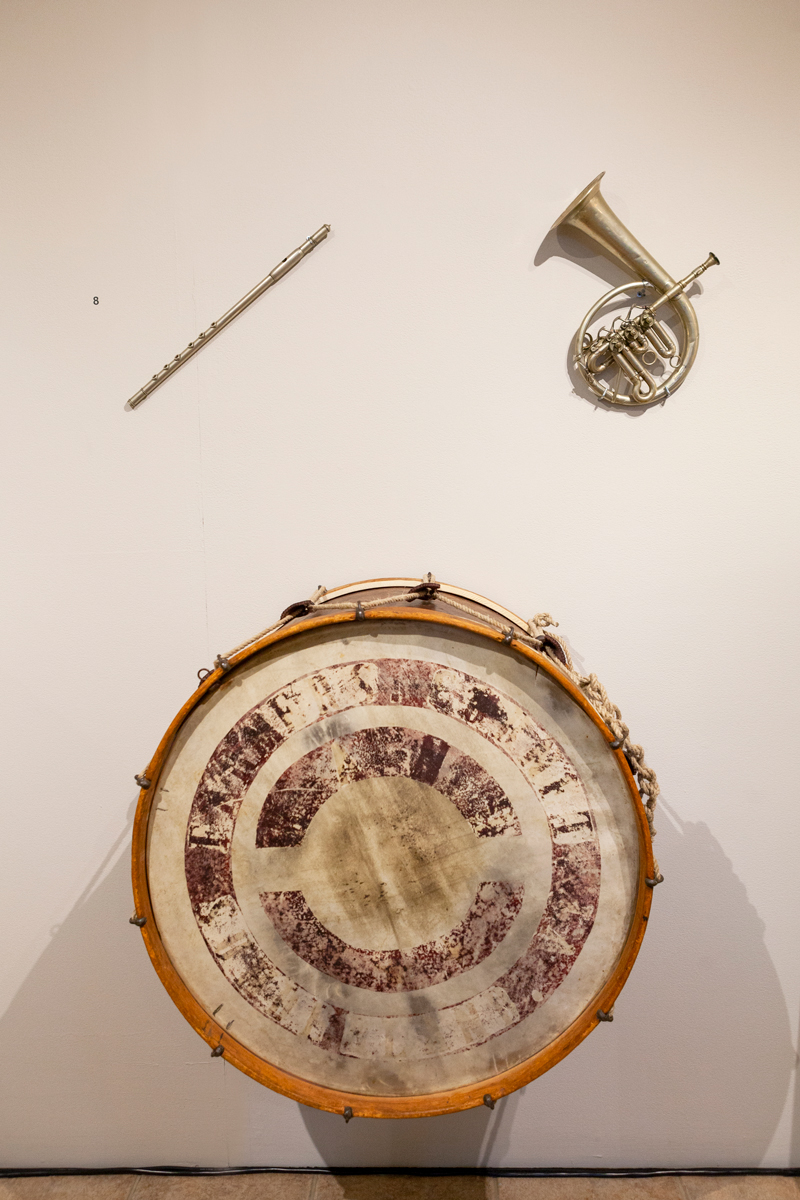2020 ︎︎︎ (re)Sounding
Bennington Museum, Bennington, VTThe three of us share a common memory from our childhoods: wandering around a museum and staring at instruments stuck inside glass cases. As youngsters, we intuitively knew that those ancient flutes, drums, and didgeridoos were meant to make sounds, potentially strange and exciting sounds. And so we shared a common dream—to hold those instruments, to play them and play with them.
(re)Sounding channels those desires through a collaborative improvisation between the Bennington Museum, musicians, scholars, and composers. Collectively, the exhibition organizers and participating musicians investigate what happens when historically significant instruments are treated as instruments rather than relics.

The process began with informal sessions in the archives, where we learned that some instruments had grown more interesting with age, others needed a little tune up, and still others had become so fragile that even touching them would threaten their integrity. One thing was clear about them all: there was something magical in their materiality and in the stories attached to them. The ways they had aged and endured (or not) had imbued their sounds with qualities we had never before heard.
(re)Sounding takes a manifold approach to sharing the excitement. First, we are making and commissioning new music with the instruments in the collection. We have composed a piece as Seven Count, and we have also invited composers Laura Cetilia, Kristen Gallerneaux, and Molly Herron to contribute their own. Second, we are presenting live improvised performances with these instruments. Improvisation is a way of being in the present with our bodies, our instruments, each other, and our environment.
Presenting improvisation is a way for us to ask: what can these instruments do right now? What can they say in the moment of performance that might be different from what any composition can predict? This improvisational ethos is foundational to every aspect of our inquiry.
Third, we are exhibiting the instruments in the gallery along with historical ephemera and photographs. We couldn’t figure out how to let you all play them without the risk of damaging them (we know you want to, and we trust you, but rules are rules). So for us, this was the next best thing: to present the instruments with sound rather than allowing them to sit silently behind glass. Alongside them, we are also placing historic, period-accurate recordings. Like the instruments and photographs, we present these recordings as historical artifacts.

Lastly, we have written an essay and gallery guide that critically addresses the histories of these objects and the museum. In the naiveté of childhood, we desired only to play the instruments and invent our own stories around their origins. As adults, we have become more aware of the politics of historical museums and the importance of truth-telling, not just storytelling. It was essential for us to learn how and why this collection came to be, and to consider how it might create a sense of historical belonging for certain people while silencing that sense in others.

Each aspect of (re)Sounding—improvisational performance, composition, exhibition, archival research, and writing—is a filter through which we can listen to the collection and a mode through which we aspire to shift its course.

︎︎︎Read our exhibition booklet here︎︎︎